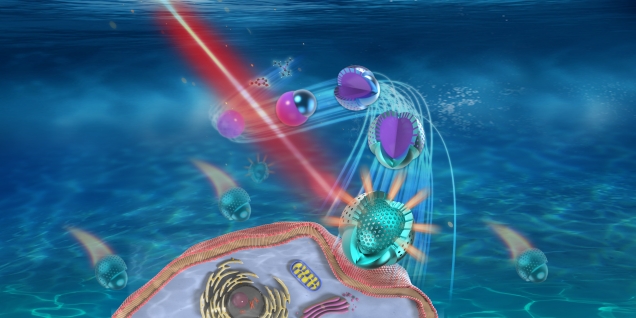The rational design and controllable synthesis of hollow nanoparticles with both a mesoporous shell and an asymmetric architecture are crucially desired yet still significant challenges. In this work, a kinetics-controlled interfacial super-assembly strategy is developed, which is capable of preparing asymmetric porous and hollow carbon (APHC) nanoparticles through the precise regulation of polymerization and assembly rates of two kinds of precursors. In this method, Janus resin and silica hybrid (RSH) nanoparticles are first fabricated through the kinetics-controlled competitive nucleation and assembly of two precursors. Specifically, silica nanoparticles are initially formed, and the resin nanoparticles are subsequently formed on one side of the silica nanoparticles, followed by the co-assembly of silica and resin on the other side of the silica nanoparticles. The APHC nanoparticles are finally obtained via high-temperature carbonization of RSH nanoparticles and elimination of silica. The erratic asymmetrical, hierarchical porous and hollow structure and excellent photothermal performance under 980 nm near-infrared (NIR) light endow the APHC nanoparticles with the ability to serve as fuel-free nanomotors with NIR-light-driven propulsion. Upon illumination by NIR light, the photothermal effect of the APHC shell causes both self-thermophoresis and jet driving forces, which propel the APHC nanomotor. Furthermore, with the assistance of phase change materials, such APHC nanoparticles can be employed as smart vehicles that can achieve on-demand release of drugs with a 980 nm NIR laser. As a proof of concept, we apply this APHC-based therapeutic system in cancer treatment, which shows improved anticancer performance due to the synergy of photothermal therapy and chemotherapy. In brief, this kinetics-controlled approach may put forward new insight into the design and synthesis of functional materials with unique structures, properties, and applications by adjusting the assembly rates of multiple precursors in a reaction system.
https://pubs.acs.org/doi/10.1021/jacs.1c10391

